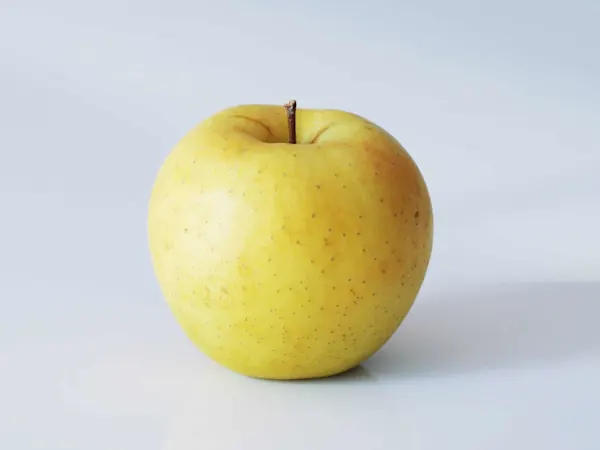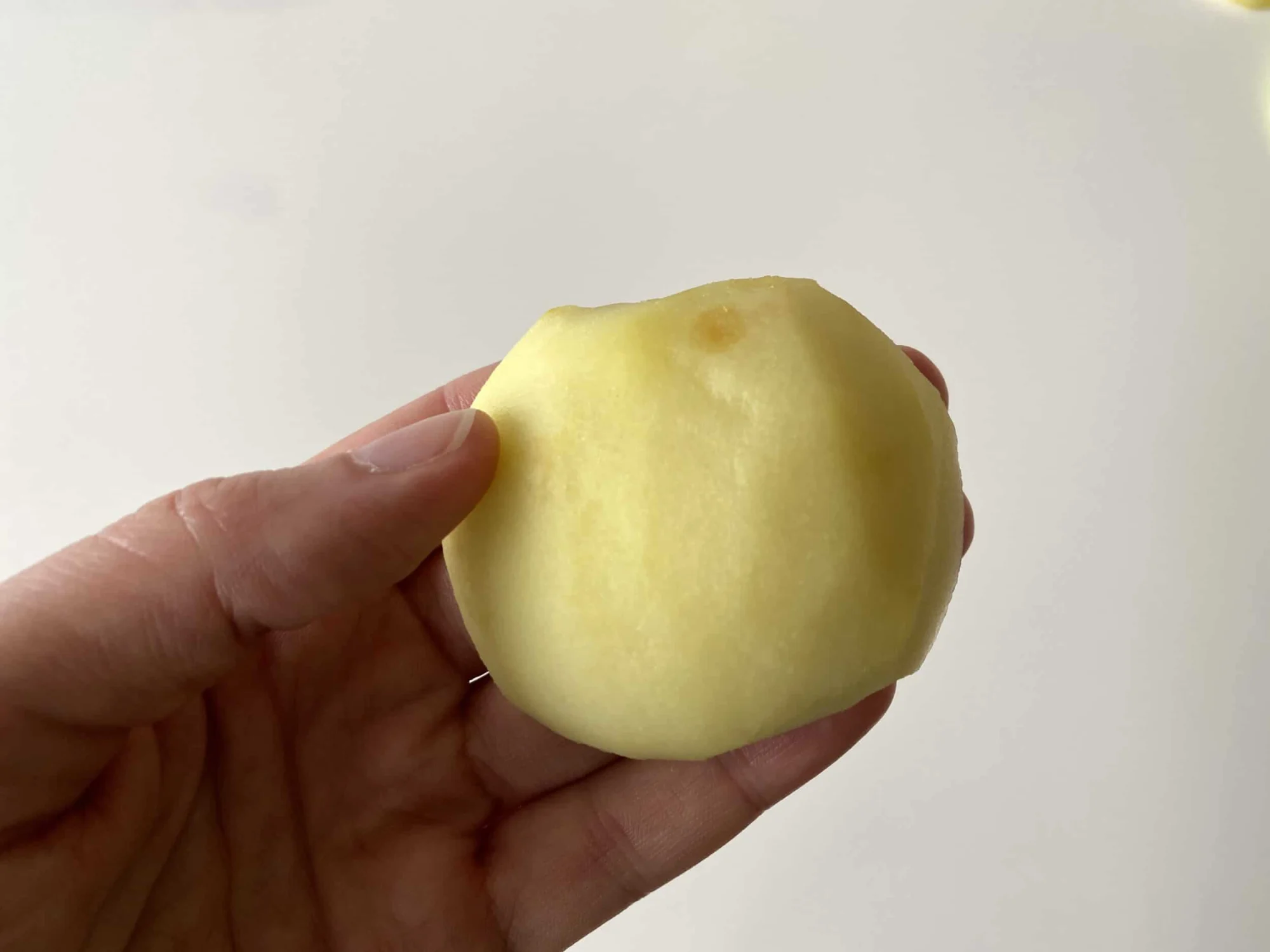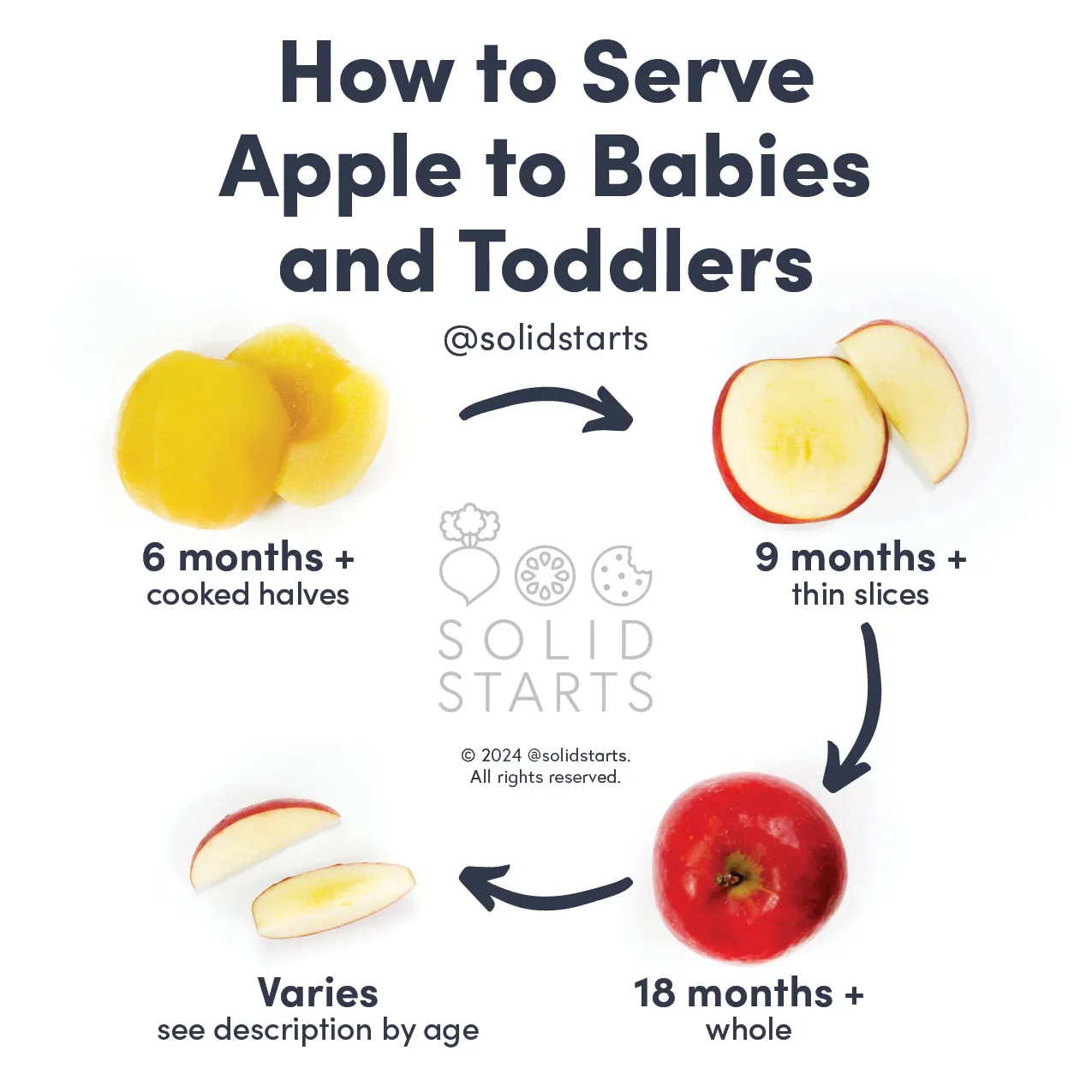Access our First Foods® Database in the Solid Starts App.
Learn more
Warning
Raw apple is one of the top choking hazards for children under 3 years old. Read on to learn more about how to safely serve it to babies.
When can babies have apples?
Apples may be introduced as soon as a baby is ready to start solids, which is generally around 6 months of age, as long as the fruit is deseeded, cut in an age-appropriate way, and cooked until soft to reduce the risk of choking.
Apples are one of the world’s most popular fruits—and for good reason. The nutritious fruit thrives in temperate climates around the globe and holds up longer in storage than most fruits. The apple’s incredible biodiversity can be traced back to Central Asia, where the wild fruit grew in mountainous regions. As trade routes developed across the Asian continent, apples made their way to Europe and eventually followed colonization to the Americas.
How do you serve apples to babies?
Every baby develops on their own timeline, and the suggestions on how to cut or prepare particular foods are generalizations for a broad audience.
6 months old +:
Cook apple halves (with skin, core, and seeds removed) in boiling water until easily pierced by a fork or cook apples in the oven until soft. From here, you can hand over the cooked apple half and let baby munch on it. You can also mash cooked apples to make applesauce and play with flavor enhancers by adding butter or yogurt for extra fat, aromatics like ginger, and spices like cardamom or cinnamon. If you’d like to serve raw apple at this age, play it safe: grate apple and serve in a bowl for baby to scoop from.
9 months old +:
At this age, continue to offer sections of cooked apple and consider serving raw apple grated or in rounds or half-round slices, about one centimeter thick, with or without the skin. Babies often chew on the skin and spit it out, and while this can seem like waste, building familiarity with skin can help encourage a child to eat fruit with the skin later in life. Skin also helps the apple stay together as baby munches on it, and the act of chewing and spitting the skin also helps develop oral-motor skills. The whole apple round is an excellent shape for children who tend to overstuff as well, as it is nearly impossible to get an entire apple round in the mouth. If baby takes a big bite, give baby a moment to either chew and swallow it or spit it out, keeping your fingers out of baby’s mouth. You can help by putting your hand on baby’s back and gently leaning the baby forward to allow gravity to help pull the piece of food towards the front of the mouth for baby to more easily spit out. Those moments can feel scary, but they are valuable teaching moments for baby to learn what isn’t safe to swallow and to practice spitting out foods.
18 months old +:
When and if you think the child is ready (they chew food thoroughly and are willing to stay seated for the meal), you can try offering whole apples for biting and chewing practice. Feel free to choose an apple variety with a slightly softer, less crunchy texture. Offering whole apples can be safer than quartered apples, apple wedges, or other large sections of raw apple. This is because even a big bite from a whole apple often results in a flat, more manageable piece, but taking a bite from an apple wedge could result in a tapered piece, which would pose more choking risk. Before offering a whole apple, you can minimize choking risk by coring the apple so the stem and seeds are removed. Alternatively, you can take the whole apple away from the toddler once they bite off most of the fruit and get close to the seeds. If the child is struggling with the skin, simply peel the apple, or peel it in “stripes” so that some skin is left on for exposure. As always, stay within an arm’s reach during mealtime and refrain from offering apples in strollers or car seats.
24 months old +:
Sometime after the 2nd birthday, most typically developing toddlers will be ready for sections of raw apple, such as quartered apples and apple wedges. Large sections of apple can be more risky than a whole apple so wait until you observe the child to be ready. The child should be consistently taking accurate-sized bites, moving the food to the side of the mouth, and chewing thoroughly. They should also be able to sit calmly while eating. As always, stay within an arm’s reach during mealtime and refrain from offering apples in strollers or car seats.


How to cook an apple for babies 6 months +
How to cut an apple for babies 9 months +
Videos
Are apples a choking hazard for babies?
Yes. Raw apple is firm, challenging to chew, and can be slippery, qualities that increase the risk of choking. To reduce the risk, prepare and serve apple in an age-appropriate way as described in the How to Serve section. As always, make sure you create a safe eating environment and stay within an arm’s reach of baby during meals.
Learn the signs of choking and more about choking first aid in our free guides, Infant Rescue and Toddler Rescue.
Are apples a common allergen?
No. Apple is not considered to be a common allergen, although reactions have been reported. Individuals with Oral Allergy Syndrome (also called pollen-food allergy syndrome) may be sensitive to apples, particularly those who are allergic to alder, birch, and mugwort pollen. Individuals sensitive to other fruits of the Rosaceae family, such as apricots, almonds, and plums may also have a similar experience with apples. Oral Allergy Syndrome typically results in short-lived itching or burning in the mouth, and it is unlikely to result in a dangerous reaction. Peeling and cooking the fruit can minimize the reaction.
As you would when introducing any new food, start by offering a small quantity at first and watch closely as baby eats. If there is no adverse reaction, gradually increase the amount served over future meals.
Are apples healthy for babies?
Yes. Apples offer carbohydrates, fiber, water, potassium, vitamins B6 and C, and antioxidants to help a growing baby thrive. Together, these nutrients help to support baby's energy for play and exploration, digestive function, hydration, metabolic processes, iron absorption, and bodily repair and recovery. Make sure to avoid apple seeds, as they can be toxic if too many are ingested at once.
When can babies drink apple juice or apple cider?
Small amounts of apple juice may be shared as a drink after 12 months of age. Note that it can be beneficial to wait until after a child’s 2nd birthday to regularly share juice and other sugary drinks. Research suggests that regular intake of juice and other sweet drinks tends to increase the risk of dental cavities and take up space in the belly, which may decrease a child’s motivation to eat other foods at mealtime and may negatively affect the child’s growth over time. However, occasional, small servings of juice after one year of age generally isn’t a cause for concern. Learn more about serving juice to babies and toddlers.
Our Team
Written by
Expert Tips Delivered to Your Inbox
Sign up for weekly tips, recipes and more!
Copyright © 2025 • Solid Starts Inc









